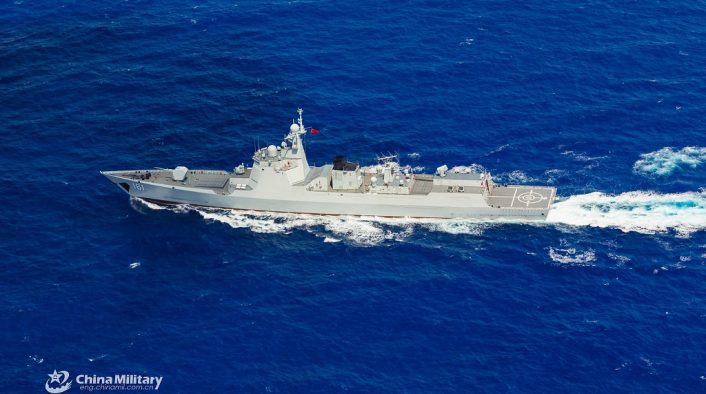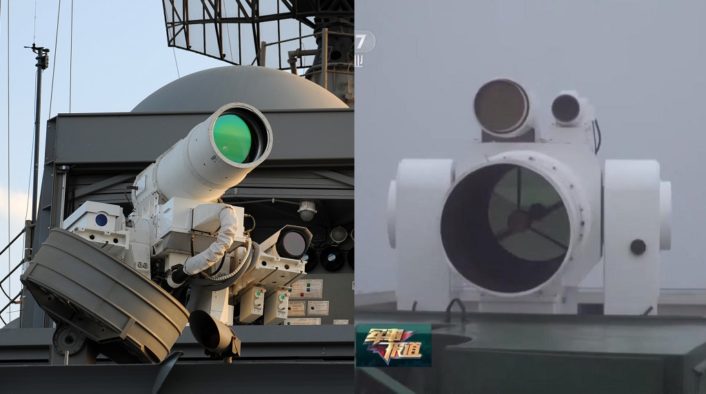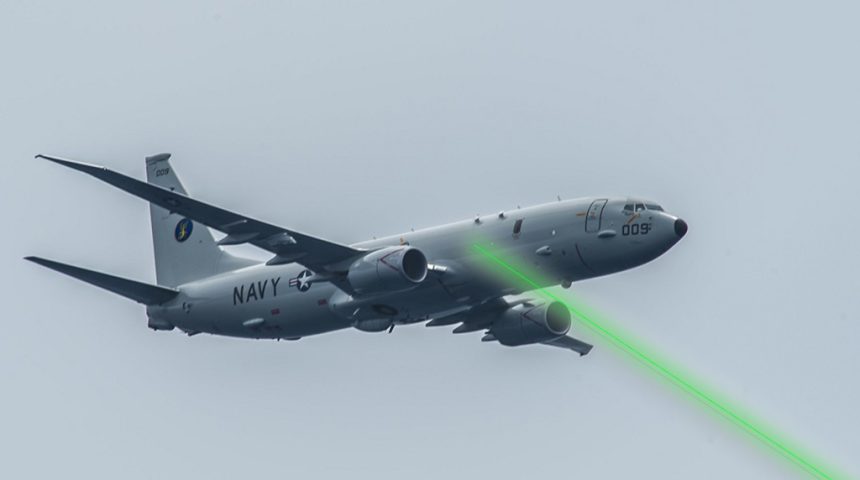This is the first time the incident is directly attributable to the Chinese military.
A U.S. Navy P-8A Poseidon was hit by a weapons-grade laser during a routine patrol above international waters on February 17, 2020. The incident happened in the Philippine Sea approximately 380 miles west of Guam, where it was targeted by the laser belonging to a People’s Liberation Army Navy’s destroyer with hull number 161, according to the official statement, which should be the Type 052D Destroyer “Hohhot”.
The laser was not visible to the naked-eye and was detected by the Poseidon’s sensors. The P-8A, assigned to Patrol Squadron (VP) 45 and based at NAS Jacksonville (Florida), is currently deployed in the U.S. 7th Fleet area of operations and operates from Kadena Air Base (Japan). No damage or injuries to the Poseidon and its crew were reported.
The U.S. Navy deemed the destroyer’s actions unsafe and unprofessional, adding also that this incident violated the Code for Unplanned Encounters at Sea (CUES), a multilateral agreement reached at the 2014 Western Pacific Naval Symposium to reduce the chance of an incident at sea, and a Memorandum of Understanding (MOU) between U.S. Department of Defense and the Ministry of National Defense of the PRC regarding rules of behavior for safety of air and maritime encounters.

The official statement didn’t provide much details about the laser, other than noting it was weapons-grade and not visible to the naked-eye. However, it is worth noting that the Chinese military is developing multiple laser systems for various applications. In particular, the PLA Navy was testing last year the prototype of a tactical laser system intended for land applications and for use aboard the new Type 55 destroyers for both for air defense and close-in defense, as alternative to the HHQ-10 surface-to-air missile. China didn’t release details about the system, other than showcasing it on the national TV channel. However, the system bears some resemblance to the AN/SEQ-3 Laser Weapon System or XN-1 LaWS, developed by the U.S. Navy and tested in 2014 aboard the USS Ponce.
The LaWS is designed to work against low-end asymmetric threats with scalable power levels up to 30 kW. While working at low power, the laser can act as an Active Denial System (ADS), a non-lethal system for area denial, perimeter security and crowd control, while in high power mode it can be used to disable sensors and engines and also detonate explosive materials. During testing, the laser was directed by the Phalanx CIWS (Close-in Weapon System) Fire Control Radar and successfully hit targets mounted aboard a speeding small boat, a Scan Eagle Unmanned Aerial Vehicle (UAV) and other moving targets at sea.

Similar incidents happened also in the last two years, however this is the first time the incident is directly attributable to the Chinese military. Back in 2018, a U.S. C-130 Hercules was targeted by a visible laser while the aircraft was flying near China’s Djibouti base, resulting in minor injuries to two pilots. In 2019, Australian Navy helicopter pilots flying from the HMAS Canberra were hit by lasers in the South China Sea during a cruise from Vietnam to Singapore, requiring them to perform a precautionary landing.









